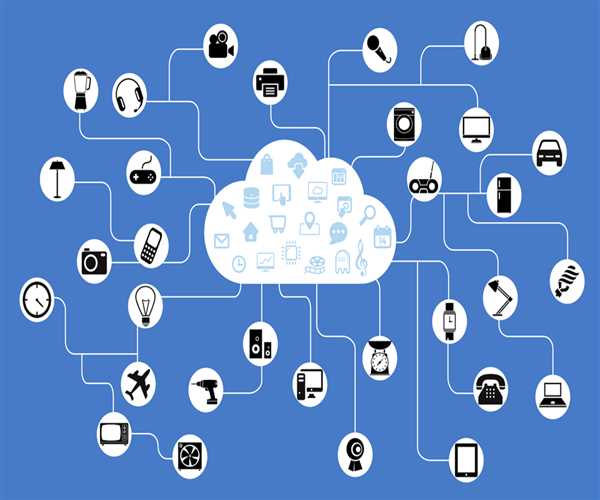History leading to the development of modern-day information technology (IT) goes back more than a thousand years. However, the term information technology was developed recently. It was first cited in the Harvard Business Review in 1958. The article was titled Management in the 1980s.
Let us now have a very good look at what information technology is.
Information Technology today - what is it?
The term Information Technology (IT) is neither a buzzword nor does it mean mere computing tasks like:
· Installation of operating systems.
· Installation of hardware and software.
· Resolving computer issues.
· Controlling access to certain portals and systems.
IT professionals today are now diverse in skills, portfolios, and areas. They are in quite a demand. Here are some of the great things they do:
- Making policies ensures that information technology systems today run correctly.
- IT systems are in line with an organization’s core objectives.
- Maintenance of devices and networks to guarantee maximum uptime.
- Automation of processes to improve business efficiency and efficacy.
- Researching, implementing, and managing new technologies to accommodate evolving needs of companies.
- Maintaining service levels, security, and connectivity to keep the continuity and longevity of a business in continuing fashion.
Thanks to information technology, today’s modern economy is alive. As it is connected to data, it would collapse if information technology collapsed.
Evolution of computers and computer technology – exploring various eras
Before the modern-day computer was made, there were precursor technologies and gadgets that helped people achieve complicated tasks. Numerous data processing and execution functions of modern computing and IT devices (conditional branches, statements, and loops) were derived from the early works of Jacquard, Charles Babbage, and Lady Ada Lovelace.
Computers in the 20th century used the architecture and system of these pioneers. It led to the development of systems that automatically issued machine instructions. However, electronic devices soon replaced these systems.
Here are some of the earliest calculating machines and devices precursors to computers.
- The abacus is known to be the earliest calculating and computing tool.
- The Jacquard loom was the first computing prototype developed in the 19th century. It was able to produce fabrics with unique woven patterns. The machine used punched cards that fed the loom information to control the weaving patterns.
- It was in the 1820s that an English mechanical engineer named Charles Babbage invented the differential engine. The machine helped make complex navigational calculations. His machine was regarded as the first proper mechanical computing device and he was thus named the Father of the Modern Computer.
- Charles Babbage in the 1830s introduced plans for the Analytical Engine. It was earlier scheduled to work on a punch card system. His pupil, Lady Ada Lovelace, expanded these plans. These instructions are today known as computer programs.
- American inventor and statistician Herman Hollerith made use of punch cards for feeding data to his census tabulating machine during the 1890s. It was a key precursor of modern computers. The machine automatically recorded statistics by reading and sorting cards. The order was the numerical position of the punched holes.
- Herman Hoellerith in 1911 established the Tabulating Machine Company (TMC) to produce these Machines. The company in 1924 changed its International Business Machines Corporation (IBM).
- German Engineer Konrad Zuse in 1940 invented Z2. One of the earliest electromechanical relay computers.
- In the late 1940s, Colossus computers were developed by British codebreakers. During World War II, they were instrumental in intercepting and deciphering communications from German cipher machines (known as Tunny).
- Renowned British mathematician Alan Turing invented the Bombe during World War II. It helped decrypt messages and codes of the German Enigma machine.
- British engineering company Ferranti Ltd. in 1951 developed the Ferranti Mark 1. This machine was known to be the world’s first general-purpose computer for commercial use.
From the 1950s, IT development picks up the pace
The LEO I Computer was created in 1951 by J. Lyons and Co. It ran its first business application in the same year. MIT’s Whirlwind was also made in the same year. Both worked nicely during that time. In 1956, The Whirlwind allowed users to input commands using a keyboard. As computers began evolving in the 1960s, the following devices and languages were developed:
- Screens.
- Text Editors.
- Hard Drives.
- Mouse.
- Integrated Circuitry.
- Fiber Optics.
- Programming languages (especially COBOL and FORTRAN).
The IT sector began to evolve, to the point that it is no longer the mathematician’s exclusive area. It now employs professionals with an array of qualifications and skills, such as
- Network engineers.
- Business analysts.
- Programmers.
- Cybersecurity experts.
- Project Managers.
The information revolution started with the birth of the internet
From the 1950s and 1960s onwards, numerous defense establishments and universities were dominating computer science and information technology. The corporate world eventually embraced them. This led to the creation of application software such as spreadsheets and word processors.
This hence generated a demand for specialists who can easily design, create, adapt, and maintain the required hardware and software. The purpose was to support crucial business processes.
Numerous computer languages were made and experts in these languages also came into the public eye. Programmers working on Oracle and SAP emerged as database experts. C Language prOneammers began writing and updating networking software. The following fields demand such professionals
- Artificial Intelligence (AI).
- Compliance.
- Cybersecurity.
The email was invented in the 1970s. It revolutionized communications and information technology. It was an experiment to check if multiple computers can exchange a message. With time it evolved into a quick and easy way for humans to be in touch. The term email was coined later. Its early standards are still in use today (like the symbol @).
Modern technologies began with the Internet and the world wide web (WWW). Both led to the eventual creation of the best dedicated server. The internet began with ARPANET, a United States government-funded network. It was conceptualized by Scientists at the Massachusetts Institute of Technology (MIT) as an intergalactic computer network.
This laid the foundation for the modern-day Internet. It later grew into an interconnected network of networks using a few computers. The following are its creations:
- Transmission Control Protocol (TCP).
- Internet Protocol (IP).
This enabled computers over long distances to virtually communicate with one another. Sending information from one system to another is known as Packet Switching. Machine-to-machine communication became a possibility.
The invention of Tim Berners-Lee and subsequent inventions
Sir Tim Berners-Lee is credited with creating the World Wide Web (www). It is an internet protocol that helped anyone with internet access retrieve information and was created in 1991.
The Nokia 9000 communicator was the world’s first internet-worthy mobile device back in 1996. During the same time, the world’s first search engine, laptop, and domain search engine were available. It was in the late 90s that Google was established.
Evolution of IT in the 21st Century
The advent of the 21st century saw the development of an open-source content management system (CMS). Among the first ones is WordPress. it helped users become active participants in posting their content.
The realm of IT expanded relatively quickly. Tablets, smartphones, voice-activated technology, nanometer computer checks, and quantum computers are among the concepts that became real.
The concept of cloud computing was developed in the 1960s. In 1994, the cloud metaphor meant virtual services and machines working as real-time computing systems.
It was not until 2006 that Amazon Web Services (AWS) was developed which took off cloud computing. The popular ones are
- Google Cloud.
- Alibaba Cloud.
- Microsoft Azure.
These three hold a reasonable chunk of the cloud computing market. Their creation was spearheaded by the creation and distribution of the best dedicated servers.
Today it is used by almost everyone and no company can ever imagine itself without it. It helps users share computing resources with others at the same time.
Conclusion
Over the previous decade, numerous technological advancements have made the world of IT more competitive and innovative. Here are some of the most interesting developments taking it to the top:
- Internet of Things (IoT).
- Advancements in Social Media platforms.
- Improvements in Artificial Intelligence (AI).
- Improvements made in Augmented and Virtual Reality (AR & VR).
- Machine Learning.
- Computer Vision.
- Big Data.
- Robotic Process Automation.
- Innovations in mobile technologies and devices like 4G and 5G.




Leave Comment